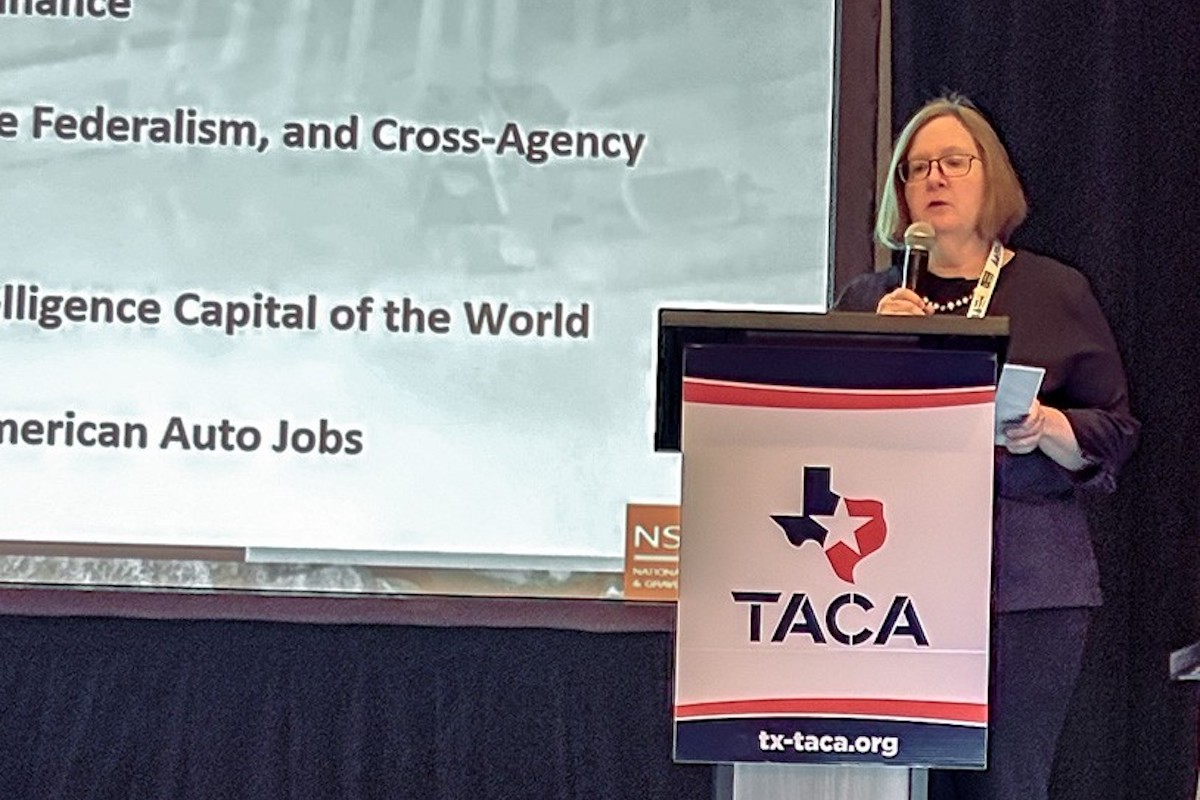In her work at The University of Texas (UT) at Austin, Fernanda Leite, Ph.D., P.E., Associate Professor, explores the practical applications of Building Information Modeling (BIM), Advanced Work Packaging (AWP), Virtual Reality (VR), and other technological advances, providing the groundwork for contractors to improve their operations.
Leite joined UT’s Civil, Architectural, and Environmental Engineering Department in 2010. Since then, the Construction Industry Institute (CII) – based at UT – has sponsored nine of her research projects. CII brings together owners, engineers, contractors, and academia to create solutions that enhance business effectiveness and sustainability of the capital facility life cycle. Leite serves on CII’s Strategic Planning Committee. She also received CII’s Outstanding Researcher Award in 2018, Outstanding Instructor Award in 2015, and Distinguished Professor Award in 2011.
In addition, Leite authored the book “BIM for Design Coordination: A Virtual Design and Construction Guide for Designers, General Contractors, and MEP Subcontractors.” She holds the John A. Focht Centennial Teaching Fellowship in Civil Engineering and in 2019 received the Daniel W. Halpin Award for Scholarship in Construction from the American Society of Civil Engineers Construction Institute.
In her interview with Texas Contractor, Leite shares the lessons she learned throughout her career and how the results of her research can help contractors.

| Your local NPK Construction Equipment Inc dealer |
|---|
| WPI |
Where did you grow up?
I grew up in northeast Brazil, where my family is originally from, and Texas. My father attended Texas A&M in College Station for his master’s and doctorate degrees. After he finished his Ph.D., we all returned to Brazil; I was 14 years old at the time. I earned my undergraduate and master’s degrees in Brazil, then returned to the U.S. and earned my Ph.D. in Civil Engineering from Carnegie Mellon University in Pittsburgh.
Why did you choose your career?
My paternal grandfather was a developer in Brazil, and visiting construction sites with him fascinated me. I knew I wanted to work with construction, but at the same time I was passionate about teaching. My father, an academic himself, suggested I combine the two passions and become a university professor to teach construction engineering.
What lessons have you learned in your professional life?
The more I progress in my career, the more I work with people outside my field. For example, I’m currently working on a research project (Planet Texas 2050, looking at the impact of population growth and climate change on cities and infrastructure systems) that includes city planners, computer scientists, biologists, archeologists, and other disciplines. That has given me a greater appreciation of the fact that each person thinks, collaborates, and communicates in their own unique ways, so understanding where they’re coming from and knowing how to adapt your message is key.
What’s the best advice you ever received?
Look outside your field. In order to innovate, I scan other fields for inspiration or ideas of what potentially can impact the construction industry. Always keeping an open mind and being curious leads to some really interesting discoveries.
How can construction companies use BIM to become more efficient?
The low-hanging fruit in BIM is design coordination, especially in larger projects with complex MEP systems. In its more advanced forms, BIM can be used to automate parts of design (via generative design functions), optimize construction processes (via 4D simulations), and optimize operations and maintenance. In a National Science Foundation-funded research project I call LivingBIM, I’ve been working on how to automatically update a BIM model, leveraging computer vision and deep learning approaches.

| Your local Wirtgen America dealer |
|---|
| Kirby-Smith Machinery |
| Nueces Power Equipment |
What improvements can contractors make through AWP?
One of CII’s best practices, AWP is a planned, executable process that encompasses the work on an EPC (Engineer-Procure-Construct) project, beginning with initial planning and continuing through detailed design, construction execution, and, more recently, commissioning and startup. AWP can improve field productivity and the predictability of key project metrics, such as schedule and cost. CII research has also documented that teams implementing AWP see improved field safety, better quality, and higher project team morale.
How can Virtual Reality help in construction?
In our CII-funded VR study, we conducted a series of tests comparing user performance in the same task carried out in either a desktop or an immersive VR headset. Among other things, we found that construction novices with less than three years of experience were able to double their ability to spot design errors in a 3-D model using an immersive VR interface. That means we can get new hires up to speed so much faster if we use virtual reality design review instead of a traditional desktop monitor.
What technological changes do you see ahead for the industry?
Over the last decade, we’ve seen an increasing number of hardware and software advances, from drones to laser scanning to BIM. Technology advancement will continue to grow ever more rapidly. You can envision the growth as an exponential curve. One major trend to watch is the rise of machine learning, a form of artificial intelligence (AI) that will begin functioning as an assistant to project engineers and contractors. Since we now collect more digital project data, we’re able to leverage such advanced approaches. Imagine an AI assistant helping contractors by making data-informed suggestions related to construction productivity and performance.








































































